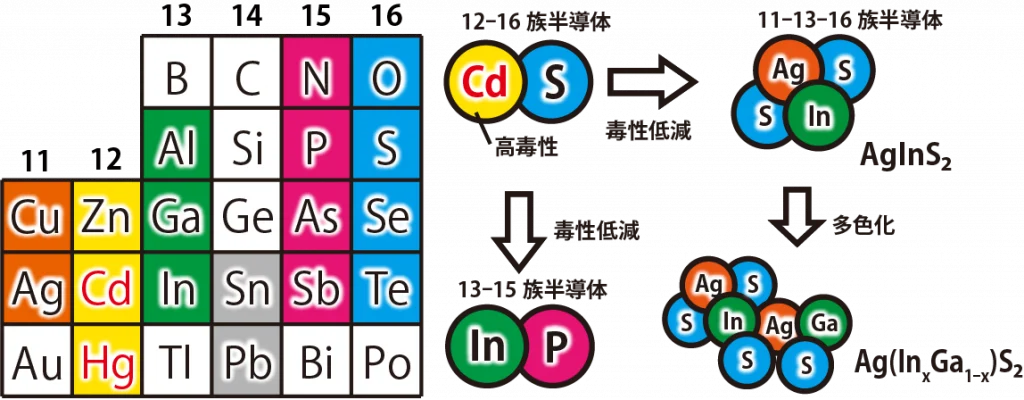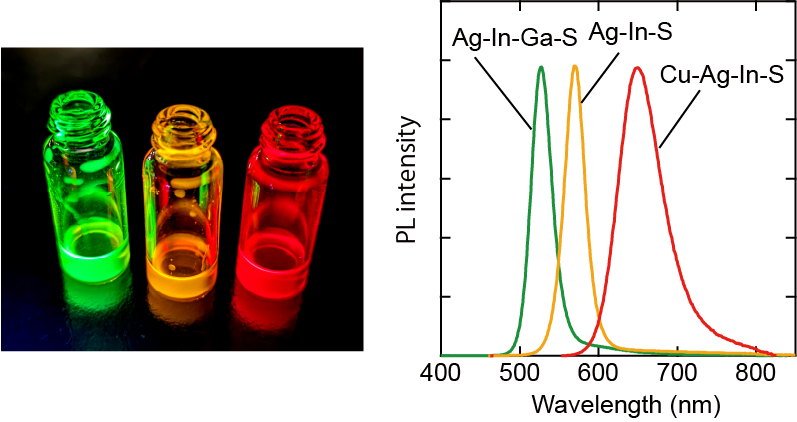
量子ドット/Quantum dots
量子ドットは小さな半導体です。半導体と聞くとコンピューターのチップが頭に浮かびますが、その他にも太陽電池や光触媒の材料として社会を支えています。半導体は光を吸収し、エネルギーの高い電子を生み出します。このときのエネルギーは本来、材料によって決まりますが、ナノ粒子のサイズによっても変化し、この現象は「量子サイズ効果」と呼ばれています。Quantum dots are tiny semiconductors. When you hear the word “semiconductor”, you probably think of computer chips, but they also support our society as materials for solar cells and photocatalysts. Semiconductors absorb light and produce electrons with high energy. The magnitude of energy is basically determined by the material, but it also changes depending on the size of the nanoparticles. This phenomenon is called the “quantum size effect”.
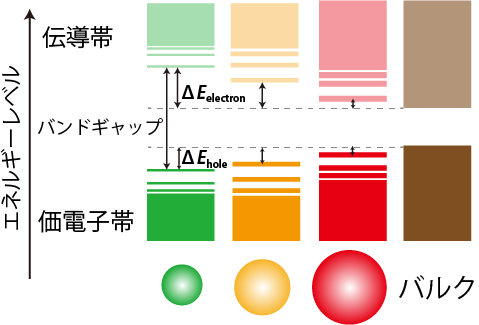
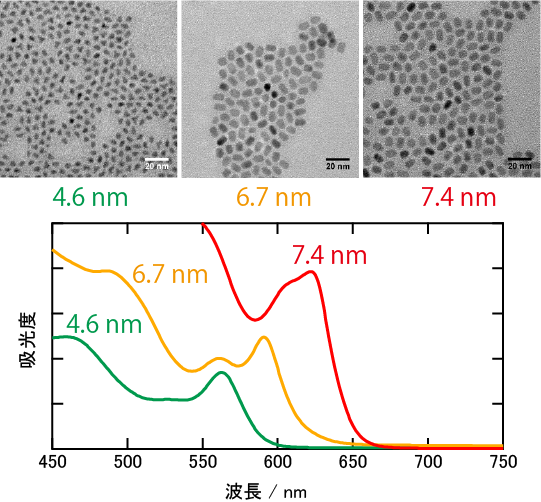
量子ドットのもう一つの大きな特徴が、発光(蛍光)特性です。本来、半導体は簡単に光るものではありませんが、化学的手法でナノ粒子化し、表面を綺麗に整えると、室温でとても明るく発光します。とても鮮やかに発光するため、最近は色再現性に優れた「量子ドットテレビ」が発売されています。なお、量子ドット開発の成果を称え、2023年にはA. I. Ekimov博士、L. E. Brus博士、M. G. Bawendi博士にノーベル化学賞が授与されました。Another major characteristic of quantum dots is their luminescence properties. Although semiconductors do not naturally emit light, they emit light very brightly at room temperature when they are made into nanoparticles and their surfaces are well passivated. The vivid color of quantum dots enabled “quantum dot TV”. The Nobel Prize in Chemistry was awarded to Dr. A. I. Ekimov, Dr. L. E. Brus and Dr. M. G. Bawendi in 2023 for their early development of quantum dots.
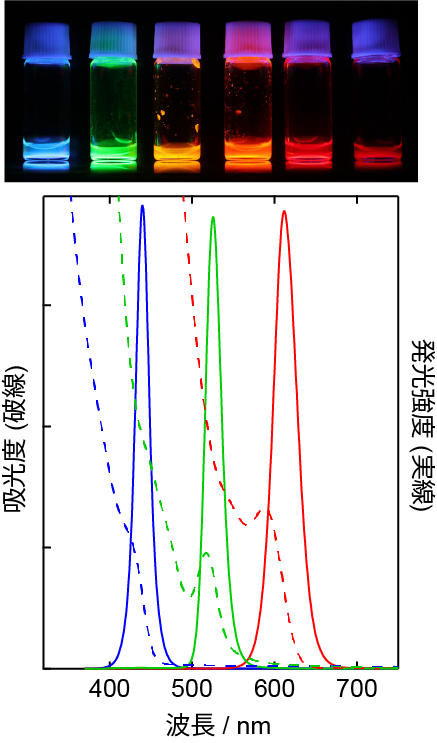
古いタイプの量子ドットは毒性の強いカドミウムやセレンを使用しています。社会のあらゆる場面で使用可能な環境に配慮した量子ドット開発に向け、我々のグループは「硫化銀インジウム」という新たな材料開発を行い、効率のよい合成経路の開発や、鮮やかな発光に成功しています。Conventional quantum dots use highly toxic cadmium and selenium. In order to develop environmentally friendly quantum dots that can be used in all aspects of society, our group has developed a new material based on “silver indium sulfide”. We have succeeded in developing an efficient synthesis route and in producing vivid luminescence from these new materials.
